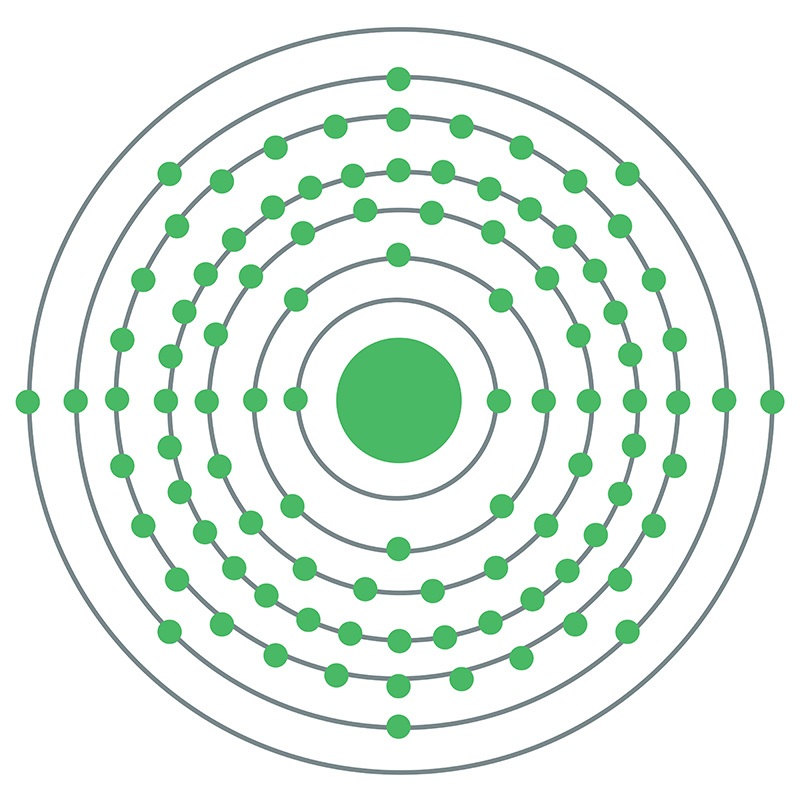Math Is Fun Forum
You are not logged in.
- Topics: Active | Unanswered
Pages: 1
#1 2025-10-04 20:00:06
- Jai Ganesh
- Administrator

- Registered: 2005-06-28
- Posts: 52,105
Californium
Californium
Gist
Californium is a highly radioactive, synthetic (man-made) silvery-white metal with the chemical symbol Cf and atomic number 98, first created in 1950 at the University of California, Berkeley, after which it was named. It is known for its intense neutron emission, particularly the Californium-252 isotope, and has high-value uses in cancer treatment, nuclear energy, and oil exploration, while also being extremely valuable and hazardous.
Californium's primary use stems from its potent neutron emission, making it a neutron source for starting nuclear reactors, and in various industrial and medical applications like neutron radiography for inspecting objects (e.g., aircraft parts, luggage, explosives) and neutron activation analysis to find trace elements in materials like gold, silver, oil, and coal. It is also used in cancer therapy, to create higher mass elements in research, and as a component in certain portable metal and explosive detectors.
Summary
Californium is a synthetic chemical element; it has symbol Cf and atomic number 98. It was first synthesized in 1950 at Lawrence Berkeley National Laboratory (then the University of California Radiation Laboratory) by bombarding curium with alpha particles (helium-4 ions). It is an actinide element, the sixth transuranium element to be synthesized, and has the second-highest atomic mass of all elements that have been produced in amounts large enough to see with the naked eye (after einsteinium). It was named after the university and the U.S. state of California.
Two crystalline forms exist at normal pressure: one above and one below 900 °C (1,650 °F). A third form exists at high pressure. Californium slowly tarnishes in air at room temperature. Californium compounds are dominated by the +3 oxidation state. The most stable of californium's twenty known isotopes is californium-251, with a half-life of 898 years. This short half-life means the element is not found in significant quantities in the Earth's crust. 252Cf, with a half-life of about 2.645 years, is the most common isotope used and is produced at Oak Ridge National Laboratory (ORNL) in the United States and Research Institute of Atomic Reactors in Russia.
Californium is one of the few transuranium elements with practical uses. Most of these applications exploit the fact that certain isotopes of californium emit neutrons. For example, californium can be used to help start up nuclear reactors, and it is used as a source of neutrons when studying materials using neutron diffraction and neutron spectroscopy. It can also be used in nuclear synthesis of higher mass elements; oganesson (element 118) was synthesized by bombarding californium-249 atoms with calcium-48 ions. Users of californium must take into account radiological concerns and the element's ability to disrupt the formation of red blood cells by bioaccumulating in skeletal tissue.
Details
Californium (Cf) is a synthetic chemical element of the actinoid series of the periodic table, atomic number 98. Not occurring in nature, californium (as the isotope californium-245) was discovered (1950) by American chemists Stanley G. Thompson, Kenneth Street, Jr., Albert Ghiorso, and Glenn T. Seaborg at the University of California, Berkeley, as a product resulting from the helium-ion bombardment of curium-242 (atomic number 96) in the 152-cm (60-inch) cyclotron, followed by chemical separation from other elements by chromatography. The element was named after the state of California, where it was discovered.
All californium isotopes are radioactive; the long-lived isotopes are produced from berkelium-249 or from californium-249. They are californium-249 (351-year half-life), californium-250 (13-year half-life), californium-251 (898-year half-life), and californium-252 (2.645-year half-life). The isotope californium-249 has been used in tracer levels and microgram amounts to investigate the chemistry of californium (which exhibits an oxidation state of +3 in aqueous solution) and for preparing microgram quantities of compounds such as the oxychloride CfOCl, the oxides Cf2O3 and CfO2, and the trichloride CfCl3. The dihalides CfCl2, CfBr2, and CfI2 have been made. There is also some evidence from electrochemical studies in solutions for a +2 state. Metallic californium has been prepared and is structurally similar to metallic americium, curium, berkelium, and most lanthanoid metals.
Californium-252, because 3 percent of its decay occurs by spontaneous fission, is industrially and medically important as a very intense source of neutrons. One microgram releases 170,000,000 neutrons per minute.
Element Properties
atomic number : 98
stablest isotope : 251
oxidation state : +3.
Additional Information:
Appearance
Californium is a radioactive metal.
Uses
Californium is a very strong neutron emitter. It is used in portable metal detectors, for identifying gold and silver ores, to identify water and oil layers in oil wells and to detect metal fatigue and stress in aeroplanes.
Biological role
Californium has no known biological role. It is toxic due to its radioactivity.
Natural abundance
Californium did not exist in weighable amounts until ten years after its discovery. It is prepared, in milligram amounts only, by the neutron bombardment of plutonium-239.

It appears to me that if one wants to make progress in mathematics, one should study the masters and not the pupils. - Niels Henrik Abel.
Nothing is better than reading and gaining more and more knowledge - Stephen William Hawking.
Offline
Pages: 1